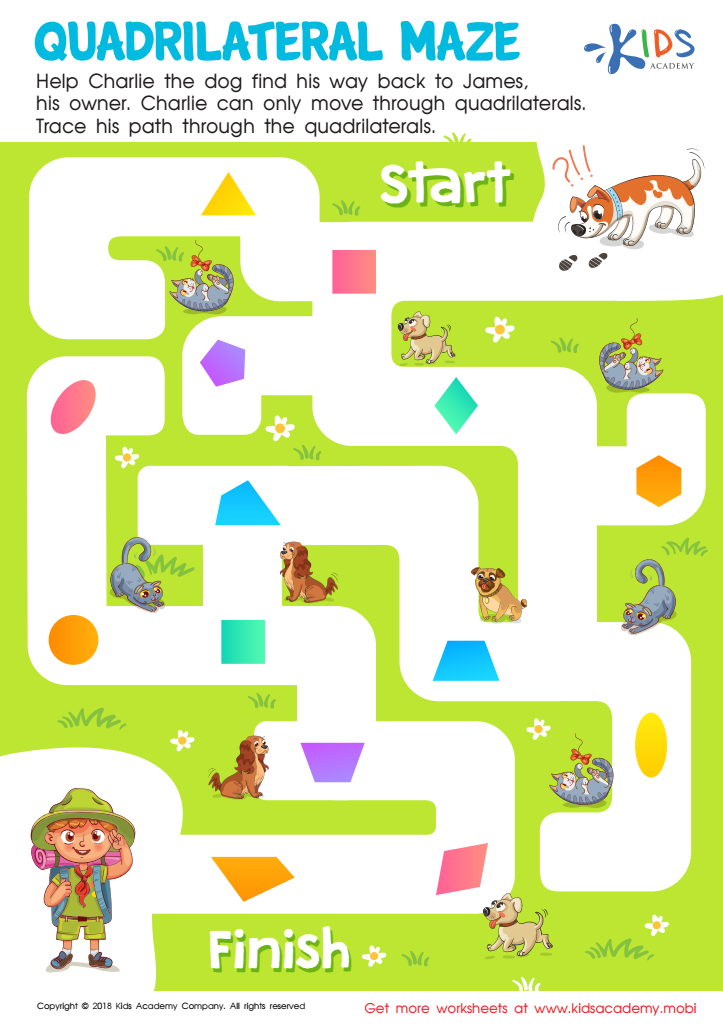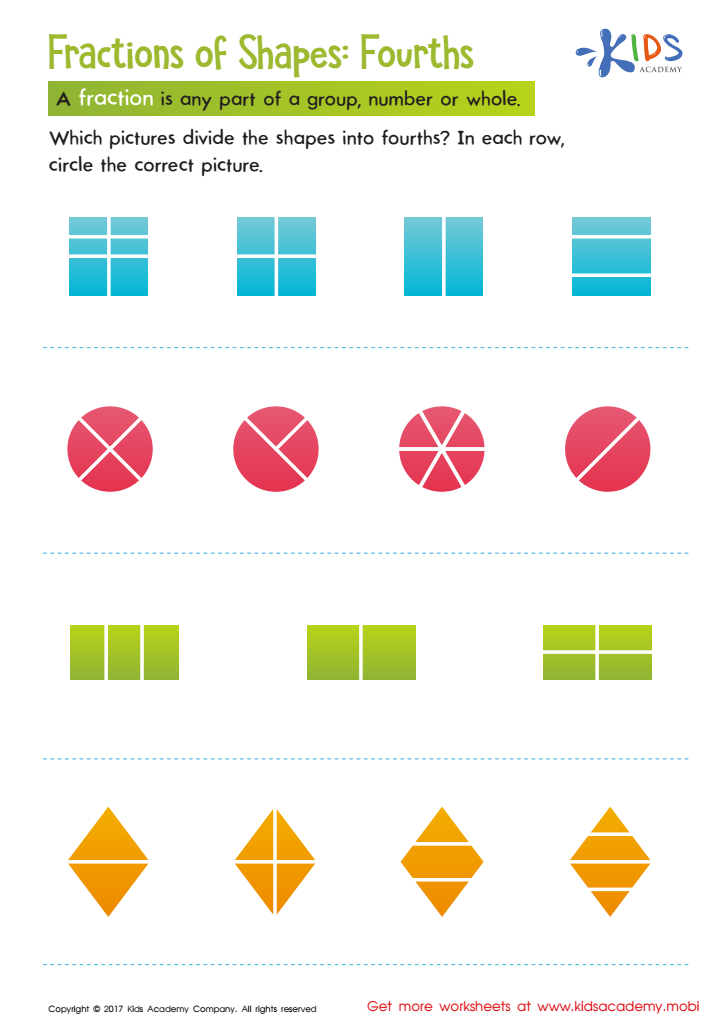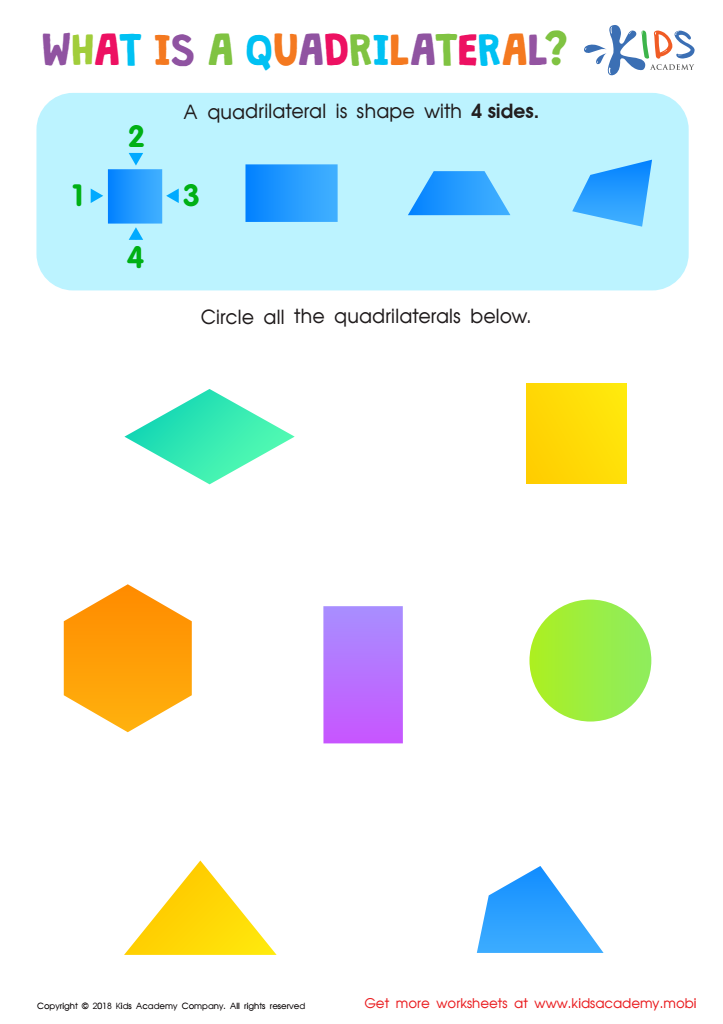Recognizing shapes Geometry Worksheets for Ages 4-8
6 filtered results
-
From - To
Introducing our "Recognizing Shapes Geometry Worksheets for Ages 4-8." These engaging and colorful worksheets are designed to make learning fun and effective for young minds. Perfect for preschool to early elementary students, our activities help children identify and understand various shapes through interactive and hands-on exercises. With a focus on building foundational geometry skills, kids will enjoy recognizing and drawing shapes while developing fine motor skills and spatial awareness. Whether for classroom use or at-home practice, our worksheets offer a comprehensive approach to early geometry education, fostering a love for learning in every young learner. Explore today!


Congruent Shapes Worksheet


Lines of Symmetry Printable


Geometry: part 1 Worksheet


Quadrilateral Maze Worksheet


Fractions of Shapes Worksheet


What Is a Quadrilateral? Worksheet
Recognizing shapes and understanding basic geometry are fundamental skills for young children ages 4-8, with significant benefits for cognitive development and practical life. Firstly, geometry helps improve spatial awareness. By identifying shapes, children develop the ability to mentally visualize objects, an essential skill for problem-solving and navigation. For instance, recognizing a circle, square, or triangle helps them grasp more complex concepts involving space and structure, crucial for future STEM learning.
Secondly, learning shapes enhances children's mathematical language and thinking. When kids engage with different geometric figures, they naturally integrate vocabulary like "edges," "corners," and "sides," laying the groundwork for more advanced mathematical concepts. Such language skills are pivotal for effective communication and academic success.
Additionally, recognizing and differentiating shapes boost early literacy skills. Many letters and numbers incorporate basic geometric forms. Understanding these shapes can thus facilitate easier learning of scripts and digits, improving reading and writing competencies.
Lastly, teaching geometry during early education nurtures cognitive development through critical thinking and pattern recognition. Kids learn to observe, categorize, and make sense of their surroundings, fostering creative and analytical skills. Overall, the inclusion of geometry in early education provides children with vital tools to thrive academically and in everyday life.
 Assign to My Students
Assign to My Students






























